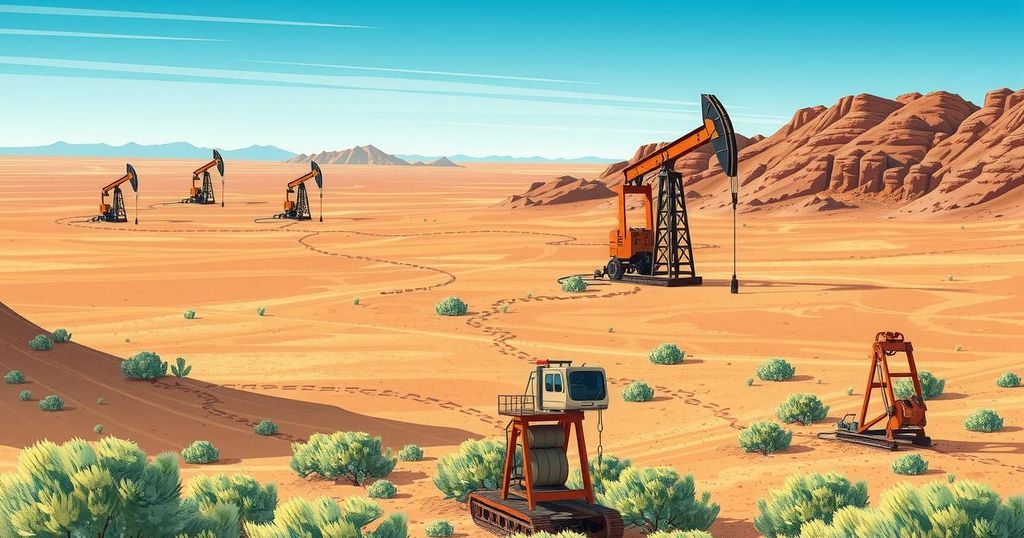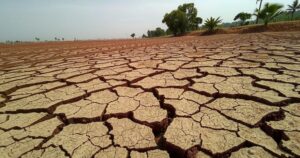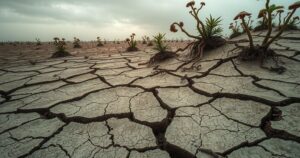Argentina’s Vaca Muerta Shale: A Catalyst for Oil Production Growth

Argentina is experiencing economic recovery under President Javier Milei, with a focus on the Vaca Muerta shale formation driving significant growth in oil production. This has positioned Argentina to potentially surpass Colombia as South America’s third-largest oil producer by the end of 2024. Investments exceeding $9 billion are set for Vaca Muerta’s development, further enhancing production and infrastructure.
Argentina’s President Javier Milei has implemented strict austerity measures aimed at addressing severe triple-digit inflation, rejuvenating the economy, and reducing the fiscal deficit. Early indications suggest that inflation rates are decreasing and the economy may be on a path to recovery, enhancing Argentina’s attractiveness to foreign investors. This renewed interest is propelling investments in the expansive Vaca Muerta shale formation, resulting in significant growth in oil and gas production, positioning Argentina to surpass Colombia as South America’s third-largest oil producer by the end of 2024.
Spreading over 7.7 million acres in Neuquén province, Vaca Muerta, which translates to “Dead Cow” in Spanish, is recognized as the third-largest hydrocarbon-rich geological formation globally. Argentine officials deem the area a vital economic asset, likening its potential to the U.S. Permian Basin, the largest oil-producing area in the country. Current estimates from the U.S. Energy Information Administration indicate that Vaca Muerta holds approximately 16 billion barrels of recoverable shale oil and 308 trillion cubic feet of natural gas, making it the world’s fourth largest shale oil resource.
Discovered in 2010 by Repsol, a global energy company, significant development of the Vaca Muerta only commenced following the nationalization of YPF in 2012. Since that time, Argentina’s hydrocarbon production has dramatically increased; for instance, oil output is projected to rise from 45,000 barrels per day in 2014 to an estimated 453,000 barrels per day by December 2024. This shale formation now accounts for half of Argentina’s hydrocarbon production in 2024, a marked increase from negligible contributions a decade earlier.
With total oil production projected to reach an average of 702,000 barrels per day in 2024, Argentina is expected to exceed its previous records, with December figures indicating 757,122 barrels per day. This surpassed Colombia’s output, solidifying Argentina’s position as South America’s third-largest oil producer. The burgeoning production levels signal a substantial future for Argentina’s hydrocarbon sector, underpinned by the Vaca Muerta area’s ongoing development and foreign investments.
The Vaca Muerta shale is poised for continued growth, with over $9 billion anticipated in investments for 2024 to enhance essential infrastructure such as pipelines and storage facilities. Leading this charge is YPF, Argentina’s national oil company, which is expected to invest $5.5 billion in its operations during 2025. This will predominantly fund upstream projects within the Vaca Muerta, projecting a 30% to 40% increase in production for that year.
A crucial development project is the $3 billion Vaca Muerta Sur pipeline. With significant financial commitments from YPF, Shell, and Chevron, this pipeline will facilitate increased delivery capabilities, alleviating transportation bottlenecks. By mid-2027, the pipeline is expected to enhance the capacity to transport 550,000 barrels per day, fostering additional production growth from Vaca Muerta.
By the end of this decade, Vaca Muerta is predicted to reach a production of one million barrels per day, elevating Argentina to become South America’s second-largest oil producer, behind Brazil. Analysts project that these advancements may contribute upwards of $10 billion to Argentina’s economy by 2030.
In conclusion, Argentina’s Vaca Muerta shale formation is emerging as a significant engine for economic growth under President Javier Milei’s leadership. With early successes in reducing inflation and increasing foreign investment, oil production is expected to soar, marking Argentina as a prominent player in South America’s oil landscape. The anticipated advancements in infrastructure and ongoing investment will bolster the Vaca Muerta’s productivity, ultimately providing crucial support to Argentina’s economy as a whole.
Original Source: oilprice.com








